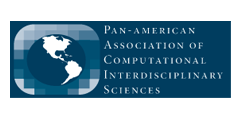Conference Programme
CCIS: Conference of Computational Interdisciplinary Sciences
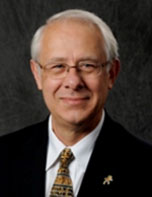
Title: "Meshfree Approach for Computational Fluid Dynamics"
Prof. Darrel W. Pepper – Unversity of Nevada Las Vegas (USA)
Web-page: https://mae.mst.edu/academy/pepper
Short-bio: Graduation from UMR (1973), he joined E. I. Du Pont. In 1987, he was Chief Scientist of The Marquardt Company. In 1988, he co-founded Advanced Projects Research, Inc, and in 1990 was appointed of Mechanical Engineering at California State University. He joined the University of Nevada Las Vegas in 1996. He received the Eric Reissner Medal In 2008. He received the AIAA Sustained Service Award (2011) and AIAA Energy Systems Medal (2012). He is the founder (1996) and Director of the Nevada Center for Advanced Computational Methods – UNLV.

Title: "A Journey to the Edge of Our Planet: How Data Assimilation Solve Problems in the Upper Atmosphere"
Prof. Tomoko Matsuo – University of Colorado (USA)
Web-page: https://www.colorado.edu/aerospace/tomoko-matsuo
Short-bio: BS in Geophysics (Hokkaido University, Japan) in 1995, M.Sc. in Physics (Nagoya University, Japan) in 1998, Ph.D. in Atmospheric Science (State University of New York, 2003). She was visiting scientist for the Institute for Mathematics Applied to Geophysics in 2003. In 2007, she was Research Scientist of the NOAA Space Wetaher Prediction Center and University of Colorado CIRES. She joined the Aerospace Engineering Sciences, University of Colorado, in 2017.
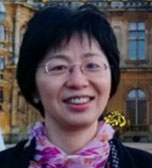
Title: "Deep Learning Based Reduced Order Modeling Applied to Geophysical Dynamics"
Prof. Fangxin Fang – Imperial College London (UK)
Web-page: https://www.imperial.ac.uk/people/f.fang
Short-bio: She was Lecturer, North China Institute of Water Conservancy and Hydropower (Beijing, China), in 1984. Ph.D. from the Dept. of Civil and Environmental Engineering, James Cook University (Australia) – 1999. Postdoctoral researcher in Laboratorie des Etudes Géophysiques et Océanographiques (Toulouse, France), in 2000-2002. She joined to the Earth Science and Engineering, Imperial College London (UK), as Research Associate in 2002, and as Senior Research Fellow in 2017.
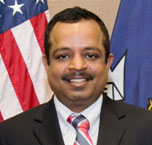
Title: "Unified Forecast System Development and Operational Implementation Plans at NCEP/EMC"
Dr. Vijay Tallapragada – NOAA-NCEP (USA)
Web-page: www.linkedin.com/vijay-tallapragada-061a71a
Short-bio: Meteorologist, Ph.D. and M.Sc. in Atmospheric Science from Andhra University (India). He was a research associate at the Dept. of Meteorology, Florida State University (USA). In 2006, he joined National Center for Environmental Prediction (NCEP). Leading the NCEP-EMC Hurricane Forecast Project in 2010. Chief of Global Climate and Weather Modeling Branca (2015), and Modeling and Data Assimilation Branch (2017).
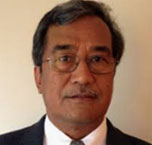
Title: "Computational Challenges for Space Weather in the Big Data Age"
Prof. A. Surjalal Sharma – University of Maryland (USA)
Web-page: https://www.astro.umd.edu/people/ssh.html
Short-bio: BS in Physics (University of Delhi, India) in 1970, M.Sc. in Physics (University of Delhi, India) in 1972, and Ph.D. in Theoretical Physics (Physical Research Laboratory, India) in 1976. He was Senior Research Scientist of Dept. of Astronomy, University of Maryland (College Park, USA) in 1999. He became a full member in 2007. Since 2011, He was the Director of the Goddard Planetary Heliophysics Institute (University of Maryland, College Park, USA).
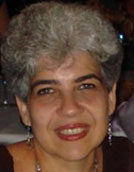

Title: "Dynamics and control of vector-borne diseases transmitted by Aedes Aegypti: linking data and modelling"
Prof. Suani Tavares R. Pinho
Universidade Federal da Bahia (UFBA, Brazil)
Web-page: http://lattes.cnpq.br/613844433931038
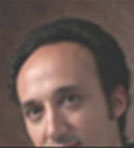

Title: "The Promise of Reconfigurable Computing and its Challenges: Can FPGAs (really) Become Mainstream, and How?"
Dr. Pedro Diniz
Custom Silicon Solutions, Inc. (USA)
Web-page: www.globalspec.com/supplier/profile/CustomSiliconSolutions
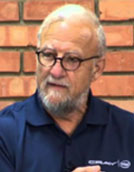

Title: "Challenges of Utilizing Exascale Computing Efficiently"
Dr. John Levesque
Cray Inc. (USA)
Web-page: http://www.cray.com/
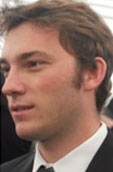
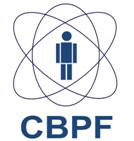
Title: "The Open Universe Initiative"
Dr. Ulisses Barres de Almeida
Centro Brasileiro de Pesquisas Físicas (CBPF, Brazil)
Web-page: http://lattes.cnpq.br/3078826671259613


Title: "High performance GPU computing on a web browser using WebGL"
Dr. Abouzar Kaboudian
Georgia Institute of Technology (USA)
Web-page: www.abouzar.net
Short-course materials: http://www.chaos.gatech.edu/ccis2019/sc1/
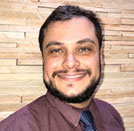
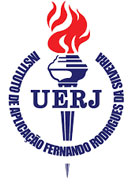
Title: "Introduction to Uncertainty Quantification"
Prof. Américo Cunha Jr.
University of Rio de Janeiro State (Brazil)
Web-page: http://www.americocunha.org/uq
GeorgiaTech – School of Physcis
Atlanta (GA), EUA
March, 19th-22th – 2019
CCIS 2019 – Schedule
| Day/time | March 19th | March 20th | March 21th | March 22th |
|---|---|---|---|---|
| 08:00-09:00 | SC-1 | SC-1 | SC-1 | SC-1 |
| 09:00-10:00 | SC-2 | SC-2 | SC-2 | SC-2 |
| 10:00-10:30 | Opening Ceremony Coffee-break |
Coffee-break | Coffee-break | Coffee-break |
| 10:30-11:30 | PT1 | IT1-IT2 | PT3 | PT5 |
| 11:30-12:30 | TS1-TS2a | TS5-TS6a | TS2b-TS6b | SS4 |
| 12:30-14:00 | Lunch | Lunch | Lunch | Closing Ceremony |
| 14:00-15:00 | TS3-TS4 | PT2 | IT3-IT4 | |
| 15:00-16:30 | PS | PS | PT4 | |
| 16:30-17:00 | Coffee-break | Coffee-break | Coffee-break | |
| 17:00-18:00 | SS1 | SS2 | SS3 | |
| 19:00-20:30 | CCIS'19 Dinner |
SC-X: Short-course (X = 1, 2)
SC-1: High performance GPU computing on a web browser using WebGL (Instructor: Abouzar Kaboudian – Georgia Tech, USA)
SC-2: Introduction to Uncertainty Quantification (Instructor: prof. Americo Cunha – UERJ, BR)
PS: Poster Sessions
TS: Technical Session
TS1: Non-linear dynamics and Computational bio-mathematics
TS2a: Engineering applications (a)
TS2b: Engineering applications (b)
TS3: Data Science and Big Data
TS4: Image processing
TS5: Computational techniques on geosciences
TS6a: Optimization (a)
TS6b: Optimization (b)
SS: Special Sessions
SS1: Data assimilation, inverse problems, and Uncertainty quantification
SS2: New trends on Computing Science
SS3: Hybrid and High performance computing
SS4: Computational Astrophysics and Cosmology
Short-course 1
Instructor: Abouzar Kaboudian (Georgia Tech, USA)
Title: High performance GPU computing on a web browser using WebGL
Abstract:
Over the past years, as the problems that we tackle have become more and more complex, the demands for computational power has increased significantly. However, CPU speeds have failed to increase as fast as the demand due to physical limitations in developing faster CPUs. Nowadays, we see CPUs with multiple cores to introduce a small level of parallelization in personal computers and when even that is not enough scientists use clusters for parallel computing. However, clusters are expensive, hard to maintain, and running your codes usually requires staying in user queues for your turn to run your program.
Nowadays, graphic cards, or more precisely Graphic Processing Units (GPUs) come with hundreds to thousands of computational cores. Each core, is usually slower than a typical CPU core, but the sheer number of the cores makes the computational power of GPUs tens to hundred times larger than traditional CPUs at a fraction of the cost of supercomputers. In this hands-on short course, we will discuss the steps required to develop interactive GPU applications which run on any modern web browser without the need to compile or even install any additional program or plugin. Our language of choice will be WebGL 2.0 and we will use our in-house library, Abubu.JS, which simplifies numerical computing using WebGL 2.0 and is freely available for use. We will show how to programs to implement interactive applications that run in real-time on the GPU which would otherwise require supercomputers to solve or would need several hours or even days to run on CPUs.
Objectives: By the end of this short course, the attendees should be able to:
- implement their numerical schemes in WebGL in 2D and 3D environments on the GPU;
- visualize their results in real-time as the solution progresses;
- implement interactive GPU simulations;
- carry out post-processing operations such as reduction operations in parallel on GPU and save their results to disk.
Day 1 (March 19, 2019):
- Introduction to graphics pipeline & Abubu.js
- Introduction to drawing using vertex and fragment shaders and the GLSL language
- Introduction to textures and rendering to textures
- Using textures to plot computed data in Abubu.js
Day 2 (March 20, 2019):
- Iteration basics in WebGL
- Study of complex iterative maps and fractals using WebGL
- Interaction basics and study of fractals
Day 3 (March 21, 2019):
- Solving time marching PDEs in WebGL using shaders and textures
- Solving PDEs with more than 4 state variables in WebGL
- Solving PDEs with more than 32 state variables in WebGL
Day 4 (March 22, 2019):
- Solving PDEs in 3D setups using WebGL.
- Reduction operators in the WebGL parallel environment
- Saving data to disk
Short-course materials: http://www.chaos.gatech.edu/ccis2019/sc1/
Short-course 2
Instructor: Americo Cunha (UERJ, BR)
Title:Uncertainty Quantification in Computational Predictive Science
Abstract:
Computational predictive models are standard tools for analysis of complex systems. However, due to variabilities on their parameters and, possible wrong assumptions made on their conception, they are uncertain with respect to the real system. The first source of uncertainty is inherent to measurements limitations, material variabilities, etc. Meanwhile, the second type is essentially due to lack of knowledge about the underlying governing laws. Uncertainty Quantification (UQ) is a multi-disciplinary area that deals with quantitative characterization and reduction of uncertainties in applications, which is extremely necessary to give robustness to computational forecasts. This short course covers the basic UQ vocabulary; basic notions on probability and statistics; some approaches to model uncertainties; the main uncertainty propagation techniques. Computer activities are developed in parallel to theoretical expositions, as a way to give a hands-on tone to the course.
PT: "Plenary Talks"
- Darrel Pepper (University of Nevada, USA): "Meshfree Approach for Computational Fluid Dynamics"
- Tomoko Matsuo (University of Colorado, USA): "A Journey to the Edge of Our Planet: How Data Assimilation Solve Problems in the Upper Atmosphere"
- Fangxin Fang (Imperial College, UK): "Deep Learning Based Reduced Order Modeling Applied to Geophysical Dynamics"
- Vijay Tallapragada (NOAA-NCEP, USA): "Unified Forecast System Development and Operational Implementation Plans at NCEP/EMC"
- A. Surjalal Sharma (University of Maryland, USA): "Computational Challenges for Space Weather in the Big Data Age"
IT: "Invited Talks"
- Pedro Diniz (Custom Silicon Solutions Inc., USA): "The Promise of Reconfigurable Computing and its Challenges: Can FPGAs (really) Become Mainstream, and How?"
- Suani Tavares R. Pinho (Federal University of Bahia, Brazil): "Dynamics and control of vector-borne diseases transmitted by Aedes Aegypti: linking data and modelling"
- John Levesque (Oak Ridge National Laboratory, USA): "Challenges of Utilizing Exascale Computing Efficiently"
- Ulisses Barres (Brazilian Center for Physics Research, Brazil): "The Open Universe Initiative"
TS: Technical Sessions
TS1: Non-linear dynamics and Computational bio-mathematics
- Numerical Study of Defects in Swift-Hohenberg Dynamics
Daniel Coelho, José Pontes, Norberto Mangiavacchi (Brazil) - The nonlinear dynamics of a bistable energy harvesting system with colored noise disturbances
Vinícius Lopes, João Peterson, Americo B. Cunha Junior (Brazil) - Computationally efficient identification of databased models applied to a milk cooling system
Malin Lachmann, Francesca Jung, Christof Büskens (Germany) - The nonlinear dynamics of a bistable energy harvesting system with colored noise disturbances
Vinícius Lopes, João Peterson, Americo Barbosa da Cunha Junior (Brazil)
TS2a: Engineering applications (a)
- Helicopter main rotor dynamics by neuro-fuzzy classification with bred vector
Ivana Y. Sumida, Haroldo F. Campos Velho, Thiago Ritto (Brazil) - Reconfiguration of Distribution Systems Aiming for Accumulated Impedance Balancing among Feeders Through Genetic Algorithm
Mauro Antonio G. Clark, Iulle de Macedo G. Neves, Aldir S. Sousa (Brazil) - Energy Optimization Model for Software Defined Network Routing
Gerardo Riveros et al. (Paraguay) - Field Programmable Gate Array Applied to UAV Autonomous Navigation
Gerson Penha, Haroldo F. Campos Velho, Elcio Shiguemori (Brazil)
TS2b: Engineering applications (b)
- Cooperation and punishment in community managed water supply system
Magdalena del Rocío Botta S. López (Paraguay) - A Distributed Implementation of an Improved Particle Swarm Optimization for the Euclidean Steiner Tree Problem in Rⁿ
Marcelo Rocha et al (Paraguay) - Application of Evolutionary Algorithm for Reconfiguration of the Distribution Network, Envisaging a Larger Branching of the System
- Computational intelligence for UAV autonomous navigation with multisensor data fusion
Gerson Penha et al. (Brazil)
TS3: Data Science and Big Data
- Deciphering the Transport in complex systems
Juan Valdivia et al. (Chile) - Investigating the Brazilian public policies for ethnic-racil issues and income in higher education: the case of Tocantins state in Enade 2014
David Prata, Marcelo Rocha, Harly Varão (Brazil) - Convolutional-Neural-Network-Based Occupancy Behavior Pattern Recognition for Smart Elevator Dispatching
Shu Wang et al. (USA) - An overview of local and distortional buckling in cold-formed U stiffened sections in flexure
Lucas F. Favarato et al. (Brazil)
TS4: Computational techniques on geosciences
- A Catastrophe Model for Assessing Wind and Flood Hazard Risk for Florida
Steven Cocke, Dong-Wook Shin (USA) - Parallel version for the BRAMS with Runge-Kutta dynamical core
Luiz Flávio Rodrigues et al. (Brazil) - Convolutional Neural Network (CNN)-based ENSO forecast system in a perfect model framework
Yoo-Geun Ham, Jeong-Hwan Kim, Jee-Hoon Jeong, Jin-Ho Yoon, Baek-Min Kim (South Korea) - Evaluation of precipitation variability in Brazil using neural networks
Juliana Anochi, Haroldo F. Campos Velho (Brazil)
TS5: Image processing
- Application of Digital Image Processing techniques for the analysis of artifacts in CBCT dental images
Vicente Fretes et al. (Paraguay) - Multifocus image fusion based on color mathematical morphology
Marcelo R. D. Meza, Eduardo P. G. Rodas, Jose L. V. Noguera (Paraguay) - Evaluating the Deep Learning accuracy in data extraction from synthetic image sequences
Andre Franceschi de Angelis, Thaís Rocha (Brazil) - Image Segmentation based on Multi-objective Evolutionary Algorithms
FREDY GUSTAVO ROA SAMANIEGO et al. (Paraguay)
TS6a: Optimization (a)
- A GRASP Metaheuristic Approach to the School Bus Routing Problem that Minimize the Transportation Cost
Marcelo Rocha et al (Paraguay) - A Study of Cost of Protection between FIPP and Flow p-cycle Approaches
M. D. Sekatcheff, J. E. N. Ruiz (Paraguay) - A Genetic Annealing Algorithm for Optimal Shift Design in Airport Ground Staff Scheduling
Xuejian Gong et al (USA) - Multi-objective Bilevel Optimizing Framework: A Case Study of Leader-Follower Joint Optimization for Mixed-Assembly Line Balancing and Sequencing
Wei Zhang et al (USA)
TS6b: Optimization (b)
- Evolutionary Game Theoretic Cohort Decision Model for Collaborative Crowdsourcing
Xuejian Gong et al (USA) - Cooperation and punishment in community managed water supply system
Magdalena del Rocío Botta S. López, Christian Schaerer, Gerardo Blanco (Paraguay)
Iulle M. G. Neves, Mauro Antonio G. Clark, Aldir S. Sousa (Brazil) - Why Tests for Quadratic Unconstrained Binary Optimization (QUBO) are poorly defined
Stefan Boettcher (USA) - Mixed Linear Programming Models for fruits and vegetables supply from Family farms to rural schools as support for public politics
Alexis M. Ruiz-Jara et al. (Paraguay)
SS: Special Sessions
SS1: Data assimilation, inverse problems, and Uncertainty quantification
- In-service data-driven inverse optimization for product mass customization: A case study of wheel loader transmission design
Wei Zhang et al (USA) - FPGA and Non-extensive particle filter for the drone autonomous navigation
Haroldo F. Campos Velho, José Renato G. Braga, Elcio H. Shiguemori (Brazil) - Data assimilation by neural network under missing data
Rosangela Cintra, Haroldo F. Campos Velho (Brazil) - An uncertainty quantification framework for a Zika virus epidemic model
Eber Dantas, Michel Tosin, Americo B. Cunha Jr. (Brazil)
SS2: New trends on Computing Science
- QoE Estimation in mobile networks using Machine Learning
Guillermo Osorio et al. (Paraguay) - Complexity Bounds on Quantum Search Algorithms in finite-dimensional Networks via Renormalization
Stefan Boettcher et al. (USA) - Petri Net Approach for Estimation the Level of Security System
Hein Tun (Russia) - Applying deep learning to galaxy morphology
Paulo Barchi et al. (Brazil)
SS3: Hybrid and High performance computing
- Facilities for Remote Execution of High Performance Applications in Astronomy
Ana Luisa Solórzano et al. (Brazil) - A Data Structure for Optimizing Coalescence and Code Divergence in GPU based solutions for Finite Difference Methods
Esteban Clua et al. (Brazil) - Parallelization of the Friends-of-Friends Algorithm for a Hybrid Computing with OpenACC
Ana Luisa Solórzano et al (Brazil)
SS4: Computational Astrophysics and Cosmology
- Improved performance of an array of Cherenkov telescopes by means of multi-objective evolutionary optimization
Ulisses Barres de Almeida, Bruno Souto (BR) - Numerical detection of magnetic vortices and flux ropes in space plasmas
Erico Rempel, Suzana S. A. Silva, Tiago F. P. Gomes (Brazil) - Challenges for Galaxy Morphological Classification from Large Surveys
Reinaldo R. Rosa et al. (Brazil) - Internal structure of superclusters of galaxies from pattern recognition techniques
César A. Caretta, Iris del Carmen Santiago-Bautista, Héctor Bravo-Alfaro (Mexico) - Computational Fluctuation Analysis of ionosphere plasma irregularities
Neelakshi Joshi et al (Brazil)
Poster Session
- Validation of a Variational Data Assimilation Procedure for the Estimation of Cardiac Conductivities
Alessandro Barone et al (USA) - Differential Evolutionary Algorithms for Airfoil Shape Design
Ruben Izembrandt et al. (Paraguay) - Study type B aortic dissection using a deconvolution-based nonlinear filter
Huijuan Xu et al (USA) - Improving Facility Management Performance by Optimizing Work Order Assignment with Genetic Algorithm
ungil Hong, Junghyun Kim, Eunhwa Yang (USA) - A Study of Cost of Protection between FIPP and Flow p-cycle Approaches
Marcel David Sekatcheff, José Emmanuel Noguera Ruiz (Paraguay) - Prediction of stock market using systematic trading agent considering future values
Cristhian Marcelo González López et al. (Paraguay) - Topological analysis of experimental recordings of ventricular fibrillation
Daniel Gurevich et al. (USA) - Desinging of assignment models of tasks in projects based on the Scrum Methodology
Patricia Navarro, Diego P. Pinto-Roa (Paraguay) - A Phase Congruency Edge Extractor Applied to Autonomous UAV Navigation System
Gabriel Fornari, Valdivino Santiago Júnior, Elcio Shiguemori (Brazil) - Enhancement of color images using a multiscale morphological approach
Jose Luis Vazquez Noguera et al. (Paraguay) -
Medical Imagens Enhancement Using Multiscale Top-Hat Transform by Morphological Reconstruction
Ricardo Escobar Torres, Julio César Mello Román, José Vazquez (Paraguay) -
Automatic Configuration of an Artificial Neural Network for Fire Risk Analysis
Luiza Cintra Fernandes et al. (Brazil) -
Fusion of Infrared and Visible Images Using the Top-Hat Transform with Conservation od Details Enhancement
Araceli Saravia et al. (Paraguay) -
Auto-decoder for cloud and cloud shadow detection in Landsat imagery
Reynier Hernández Torres, Haroldo Fraga de Campos Velho (Brazil) -
An Integer Linear Programming for Routing, Modulation Level and Spectrum Assignment in Opaque EON Networks
Victor rolando mareco belotto, Diego P. Pinto-Roa (Paraguay) -
Test Projects for Low Cost Components Used in VANTs Navigation Systems
Ana Beatriz A. Barros et al. (Brazil) -
Feasibility of autonomous navigation above the Amazon forest by LiDAR images
Roberto N. Salles, Haroldo F. Campos Velho, Elcio H. Shiguemori (Brazil) -
Mimetize the Spectroscopic Observation of Extensive Astronomical Objects: An Application of Computational Models
Paulo Henrique Gomes Santana, Iranderly Fernandes de Fernandes (Brazil) -
Folding mechanism of β-helical passenger domains from a bacterial autotransporter
Anthony Hazel, Yui Tik Pang, James C Gumbart (Georgia Tech, USA)
Abstract: Virulence factors, small peptides attached to larger autotransporter proteins, are a common source of virulence in infectious, Gram-negative bacteria and a new focus for antimicrobial drug development. While the transportation of the virulence factor across the inner membrane is well-studied, the mechanism of how these peptides are secreted through the outer membrane remains unclear due to the absence of traditional energy sources, such as ATP or ion gradients, at the outer membrane. Interestingly, many of these proteins come attached to large β-helical passenger domains, which do not appear to be participating in any of their virulence behavior. In addition, folding of the β-helix occurs significantly faster in vivo than in vitro, so the passenger domain likely folds along a faster, vectorial pathway as its being secreted through the outer membrane. Experimental results show that the relative stability at the N- and C-terminus of the passenger domain largely affects the secretion rate of these proteins, suggesting that the folding of the β-helix structure plays an important role in efficient secretion. In this study, we used three different simulation methods to investigate the folding mechanism and kinetics of the passenger domain of Pertactin, an autotransporter from Bordetella. Multidimensional replica-exchange umbrella sampling simulations reveal how cooperative folding beginning at the C-terminus enhances the kinetics of folding, while steered molecular dynamics simulations show differences in mechanical responses at the N- and C-terminus. Lastly, we use Markov state modelling to find intermediate folding states as well as possible misfolded structures, that may act as kinetic traps. -
Using Parallel Computing Language to Enhance our Understanding of Lattice Boltzmann Model
Claire Yanyan Ji, Hector Augusto Velasco-Perez, Abouzar Kaboudian (Georgia Tech, USA)
Abstract: The Lattice Boltzmann method (LBM) has enjoyed its popularity as a promising tool for simulating complex fluid flows. The accuracy and the stability of LBM has been improved by various techniques throughout its development. In this study, we use LBM to simulate the interaction between air flow and the flapping of wings of hawk moths. The high frequency of the flapping movement requires the algorithm to be robust for high Reynolds numbers. This poster shows preliminary results comparing the stability and the accuracy of the single-relaxation-time, the two-relaxation-time (TRT) and the multiple-relaxation-time (MRT) schemes. We implemented these algorithms in high-performance parallel GPU languages CUDA and WebGL. The code is designed to be highly adaptive and user-friendly. These simulations will provide insights and guidance to our collaborators who design experiments in wind tunnels to study the movement of insects’ wings. -
The lateral gate of BamA is associated with the POTRA domains and accessory proteins
Zijian Zhang, David Ryoo, Karl Lundquist, James C Gumbart (Georgia Tech, USA)
Abstract: Outer membrane proteins (OMPs) in Gram-negative bacteria are transmembrane β-barrel proteins that are involved in nutrition transport, signal transduction and export of virulence factors. The complex responsible for insertion and assembly of OMPs is the β-barrel assembly machinery (BAM). BAM structures have now been solved for all member proteins individually, and in complex, revealing two conformation states. However, a detailed mechanism for OMP insertion by the BAM complex is still not known. Currently, there are two leading models for this insertion process based on features proximal to the seam between the N-terminal (β1) and Cterminal (β16) strands of the BamA β-barrel: the assisted model and the budding model. The assisted model claims that, due to the decreased hydrophobic region near the lateral gate, the nascent OMP inserts itself into the outer membrane. In contrast, the budding model claims that the lateral gate opens and forms a β-sheet hybrid with the growing OMP. While both models are backed by experimental evidence, no conclusive study yet exists. To shed a light on this issue, we have performed molecular dynamics simulations to identify key interactions related to the insertion process. Using the previously identified crystal structures, we have carried out microsecond-long equilibrium simulations of BAM complex systems with an open or a closed lateral gate and with or without the lipoprotein BamB. We discovered that the laterally open structure is unstable in the absence of accessory proteins and the rotational movement of the accessory proteins drives lateral gate dynamics. -
Chirality as a destabilizer of electrical waves in cardiac tissue
Hector Augusto Velasco-Perez, Noah DeTal, Flavio H Fenton (Georgia Tech, USA)
Abstract: The electrical processes that cause an arrhythmic contraction of cardiac muscle are not well understood yet. These arrhythmias are attributed to electrical coherent structures known as spiral waves that drive the system at a higher frequency than the sinoatrial node. In thick ventricular tissue, three-dimensional effects allow for more complex structures called scroll waves, which extend the number of possible ways to initiate an arrhythmia. In the absence of spatial electrical measurements of intramural tissue, we turn to numerical simulations which let us capture the full dynamical evolution of the waves. We have developed high resolution simulations with high order numerical schemes to solve the equations of the Fenton-Karma model. To increase the speed of the computations we have implemented these simulations in parallel architectures with graphic processing units. With this numerical setup, we are able to trace in real time the dynamics of the scroll waves phase singularities, which simplifies the system stability analysis. We have observed that the chirality of the scroll waves changes the threshold for wave breakup and can lead to the system into fibrillation. We have characterized the contribution of chirality to the stability of the systems with various tissue thickness, excitability and fiber rotation rates. In the future work we will build a reduced model that captures the effects of thickness, excitability, fiber rotation and chirality.





